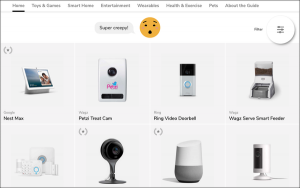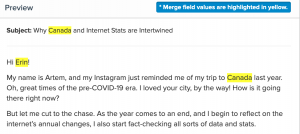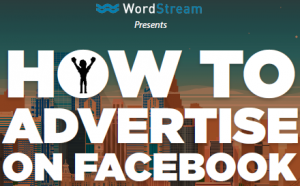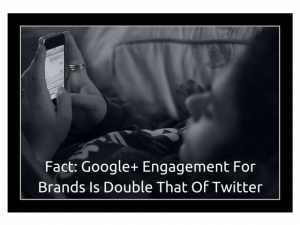
Shoppers today favor convenience above all else when looking to purchase an item. But exactly what qualifies as convenience shifts based on a consumer’s mindset and mood.
For instance, when shopping on marketplaces like Amazon, consumers are looking for speed in both finding a product as well as in its delivery. Price is also a heavy influencer, as is comparison shopping.
However, when shopping at an independent web-store or online boutique, that same consumer suddenly cares less about how much time it takes to find their preferred item. In fact, spending more time looking for that just perfect piece is a crucial aspect for those shopping at particular online destinations. Here, the experience of online shopping and being immersed in a brand’s storytelling and identity helps to drive a shopper to that purchase conversion.
The Need for Digital Diversification in an Omni-Channel Retail Environment
For online retailers of all sizes, understanding a consumer’s mindset and mood when shopping on various channels is important. After all, the more customized convenience you can provide to a shopper at the exact moment they most want it, the more likely you are to win the sale over your competitors. And there are a lot of competitors.
On Amazon alone, there are more than 600,000 unique brands –– and most of those likely have their own independent web-store as well. This is diversification in the works, thanks in large part to new consumer behavior favoring omni-channel retail experiences. In other words, because consumers will shop absolutely anywhere, your brand needs to be vying for eyeballs at those crucial touchpoints.
Amazon and Google search are the foremost discovery channels, as these platforms serve as the starting point for nearly 100% of all product-related searches. If you haven’t optimized your search rankings for Amazon or Google’s algorithms (or even opened an Amazon or independent web-store), you are automatically losing out on a large swath of potential customers.
Wholesale distribution and partnerships are also important aspects of a diversified retail strategy.
Imagine this scenario:
You are a growing shop in Austin, Texas. You have your shoes ethically designed and made in Peru, then shipped to the U.S. From there, you inspect each pair and take product photos in your studio. Now, you have to upload the new items to the site, write copy for each new product page, ensure all meta descriptions are optimized for search, and push out to a few owned distribution channels: Facebook, Pinterest, your email list. Traffic starts to come –– but not in hoards. You implement retargeting campaigns across Google and Facebook, and launch Google Product Listing Ads, locally at the very least, to drive foot traffic and potential online sales simultaneously.
Next, you reach out to your contacts at Anthropologie and Nordstrom. You have new products in and are wondering if they’d like to place a wholesale order. You have good relationships with them, and they’ve ordered multiple times in the past –– with good sales results. They agree to buy the new items in bulk for half the retail price. You make a note to follow up in a few weeks, when the products go live on their sites, to make sure your brand is mentioned –– ideally there is a linkback.
Now, you look to Amazon. You launched a few products with their new Handmade channel last year and they did well. You decide to add these newer products in as well. You don’t have to compete for the Buy Box, after all. You aren’t reselling. Your products are unique. You have an opportunity here to capture an Amazon shopper looking for custom boots. You research a bit on Amazon’s search algorithm and make sure you name your product according to their recommendations –– and price as low as you can. You make a note to research FBA and try to get your brand into Prime status.
eBay is next –– another opportunity to get your products in front of millions of potential buyers and test different product lines and price points. You make a note to dive in further when you have more time.
This is a diversification strategy –– at a very low level. It is ensuring that your products show up on the most highly trafficked sites with high shopper intent to buy. In the above scenario, this shop owner used all of the following:
- An independent web-store
- Facebook
- Pinterest
- Google PLAs
- Email marketing
- B2B Wholesale with Anthropologie and Nordstrom
- Amazon
- eBay
And all the while, the store owner was keeping a keen eye on SEO opportunities to increase his independent web-store’s search rankings and overall discoverability as consumers browse the web.
The next step to take this process further is merchandising specifically for each of those channels. Let’s break it down.
Merchandising for Distribution Channels and the Highest Possible ROI
Before you begin brainstorming, you need to know how your consumers prefer to shop on each channel. In fact, according to Veronique Lafargue, global head of content strategy for Google Apps for Work, there are three fundamental steps to a successful brainstorm:
- Get to know the user
- Think 10x
- Prototype
Getting to know the user is the very first step –– and what she says is often the most overlooked or forgotten part of brainstorming sessions.
“To solve a big question, you first have to focus on the user you’re solving it for — then everything else will follow. So we go out in the field and talk to people. We collect users’ stories, emotions and ideas. We learn to get comfortable with silence. We watch, listen and empathize. You can’t just understand your users’ needs — you need to actually relate to them,” wrote LaFargue. “[It’s] something many brainstorming sessions get wrong right off the bat — they get everyone but the user into a room together to start throwing ideas around. But that’s actually Step 2, not Step 1.”
Lucky for you, we did the research for you. In each of the sections below, you’ll see the exact data on how consumers report they spend at three different online channel types: independent web-stores, marketplaces (Amazon, eBay) and large retailers (Anthropologie, Nordstrom). Then, we’ll break it out into 10x thinking.
For prototyping these ideas, A, B and C test –– continuously. Larger online retailers change their homepage almost every six months to give the site a fresh look and feel. But, you better believe they aren’t just launching a new design. These brands are testing and iterating on their designs consistently in order to determine which designs best engage and convert. Your brand needs to be doing the same. A/B test a theory with some users, and hold a control group. Whichever one of the groups wins out at your desired goal –– test again with another variant. And so on, until you reach a goal you are happy with.
Note: Don’t let emotions dictate your decisions here. A solid test group is about 1,000 people, so run the test until you can get that amount. And then, whichever versions of the tests have the data to back them, go with that version.
Independent Web-Store Shoppers
Here’s what we know about shoppers buying on independent web-stores: they really like to shop –– and visit a wide variety of stores before they make a purchase.
Here are some key highlights:
- Independent web-store shoppers spend the majority of their budget elsewhere — a yearly average of $ 501 on marketplaces and $ 404 at large retailers
- Those who have ever shopped at a independent web-store retailer are more likely than the average shopper to say they enjoy shopping (55% to 45%).
- Average amount these shoppers spend at independent web-stores per year: $ 182.
- What independent web-store shoppers buy most often: Book, movies, music (15%), Clothing, shoes and accessories (27%), flowers and gifts (15%), Health and beauty products (19%).

Think 10x
Now that we know the shoppers on this channel a bit better, it’s time to think through what retailers can do to not just address these characteristics, but to 10x them.
Here are a few thoughts.
Storytelling with Video Content
They enjoy shopping! This isn’t a lean forward experience for them in the same way it might be fore them on Amazon or eBay. They are looking to find the right product, and have a good time while they do it. So, focus your content initiatives on short storytelling videos that immerse the shopper in your brand lifestyle and products. Place those videos on product pages, and encourage sharing –– or even encourage users to create their own. Use your brand to tell a story not just about what you are selling, but about the why. Provide an experience for the shopper they can’t get anywhere else.
Related Products, Photography and Philanthropy
This is a relatively simple one, and not really 10x thinking, but be sure to enable related products on your products pages on your web-store. These shoppers are continuously browsing –– checking out your site in parallel to your competitor. Be sure to serve up relevant items next to the product page they landed on. Push them further down the funnel –– or at least spark their interest.
Also, invest in great product photography. Every dollar spend on great product photography comes back 10-fold. Look for locations and model that reflect your brand lifestyle and point of view.
And, get progressive with it –– especially if your brand caters more to millennials. Nearly 35% of millennials are more likely to support CEOs and businesses that outwardly support or promote causes they align with. Sure, there can be downsides to CEOs or businesses taking a stance on social issues –– but this is the 10x thinking section –– and if you look at Google, a company which consistently applies this thinking –– this is very clearly in their vision of 10x work.
Easter Eggs
Taking another cue from Google combined with what we know about how web-store consumers shop –– implement surprise Easter Eggs around your site. Easter Eggs are surprise promotions or gifts customers receive when they do a particular action. These could be:
- Add a certain average order value to the cart
- Click on a certain blog post article
- Find a certain product hidden on the site
- Add a particular set of products to the shopping cart
The list goes on. Then, use your owned distribution channels (Facebook, Pinterest, email newsletter) to let customers know about the new Easter Egg, encouraging them to find it. Congratulate those who do find it on social and continue the momentum.
Marketplace Shoppers
Shoppers buying on a marketplace tend to search more on that platform and subsequently spend more money there, even though they are constantly looking for a deal.
This may be due to a few factors, like Amazon one-click checkout and related products functionality. Even customer reviews may play into the searching and spending more here trend. All of these aspects should be incorporated into your own web-store, as well.
Here are the key finding to how consumers shop on marketplaces:
- Shoppers on marketplaces search for product online more often and spend more online, too.
- The marketplace shopper is more likely than the average shopper to enjoy taking their time to find the right deal (62% v. 54%).
- These shoppers are more likely to research brands before making a purchase (61% v. 48%).
- Average amount spent per year per shopper on marketplaces: $ 488.
- What marketplace shoppers buy: Book, movies, music (44%), Clothing, shoes and accessories (43%), Computers and electronics (34%), Health and beauty products (29%).

Think 10x
It isn’t a surprise that shoppers on Amazon or eBay are looking for deals. This is a surprise though: these shoppers are more likely to research brands before they buy.
That’s a big deal. This means that if you are selling on Amazon and a customer hasn’t heard of your brand, there is a higher than normal chance that the shopper will click back to your Amazon shop or research your brand on their own (likely finding your web-store). Be sure you are linking your Amazon shop back to your web-store –– and that you actually have a web-store so that shoppers can get to know your brand even outside the Amazon environment.
Hire an Amazon Channel Manager
This is an investment, sure, but it is one very likely to pay off if you hire the right person. With just about half of all online product searches beginning on Amazon, it is just as important to ensure you are a proper amazon strategy for visibility and conversion as it is that you have a good SEO strategy for your independent site.
And there’s a lot more to think through with Amazon than you might imagine. Do you use FBA? If so, how much do you send to FBA? How do you determine the right product number without getting charged hefty fees for product that sits too long or getting kicked out of the marketplace for overselling items no longer in stock? Is it worth it to invest in shipping to an FBA center rather than just shipping product from your warehouse? Can you ship in 1-2 days? Is it imperative that your brand be in Prime? Do you need to win the Buy Box? What about Amazon Handmade or Launchpad? Have they launched those drones yet?
It is a full-time job to optimize your Amazon channel and for years, many brands held out. In particular, luxury brands were some of the last to find a home on Amazon (though Amazon courted them for years). Today nearly every brand is on the marketplace –– and more and more consumers are adopting it.
This isn’t a “if you can’t beat ‘em, join ‘em” conversation. This is a “Hey, Amazon wants to partner and has the audience you want and need to grow your business. What are you doing not investing in it?” question.
Promote Your Various Checkout Options
Are you using your owned distribution channels to promote only your web-store? Come on. Your fans are going to get tired of that, real quick. Instead, offer them options. Show them your Amazon store and your excitement for partnering with the world’s largest online marketplace. Ask for their feedback. Launch on eBay and get them excited about that platform, too.
You don’t have to link off on your web-store to those various channels but do let your followers and fans know you are there. Encourage them to review products, give feedback and overall insight into how they like to shop, where and why.
Look Beyond Amazon
Amazon isn’t the only marketplace out there. Keep your eye out for new industry up-and-comers or ones that are specific to your niche, and partner up. Additional marketplaces beyond Amazon include:
- eBay
- Jet.com
- Alibaba
- Rakuten
- Net-a-Porter
- Shopbop
- Etsy
- Sears
- NewEgg
- Walmart
If this is where consumers are wanting to spend more of their money, then make sure to give them the opportunity to spend it with you. They may even be your best customer acquistition channels.
“Marketplaces are more profitable for us,” Andrew Vagenas, co-founder and CEO of Pharmapacks, told Internet Retailer. “Acquiring a customer through our own site costs more than paying a commission on Amazon.”
Large Retail Shoppers
Finally, when it comes to large retailers, there isn’t really too much independent brands can do other than form good relationships. Large retailers are facing similar challenges to all online stores –– in that consumer behavior is now preferring omni-channel, and large retailer sites just aren’t the same traffic powerhouse they used to be.
These brands do still hold clout though –– in both the mind of consumers and of Google’s search algorithms. We won’t go too in depth here on 10x thinking. Instead, use the chart below to think through if forming a wholesale relationship with a larger retailer makes sense for your brand. And then, work to develop a good relationship –– one in which you can ask for a backlin on a product or brand page. This will increase your search engine ranking and help those who land on the page better find and engage with your brand before or after they buy.
Key highlights include:
- Shoppers on large retailer sites are high spenders and are less likely to shop elsewhere.
- Those who have ever shopped at a large online/offline retailer are less likely to research brands before making a purchase (53%) than those who shop at independent web-stores (58%), or marketplaces (61%)
- Average amount spent per year per shopper: $ 409.
- What large retailer shoppers buy: Book, movies, music (28%), Clothing, shoes and accessories (47%), Computers and electronics (32%), Health and beauty products (24%).

Conclusion
All in all, it doesn’t make sense to invest in a multi-channel strategy if you aren’t merchandising for those channels. Shoppers on different platforms shop in very different ways; knowing and addressing those variations are the keys to success.
Your next steps will be to brainstorm ways to improve your own presence on your various channels in harmony with consumer expectations. The ideas above are just a starting point, and not all ideas will work well for all retailer types. For instance, what works well for fashion retailers and what works well for automotive retailers are vastly different things. Talk to your customers, use Google’s brainstorming model, and then put plans in place to test, iterate and grow.
That’s how modern businesses survive. Use the new platforms, test out the newest offerings from traditional ones and figure out which channels are providing the highest ROI. Then, invest more there –– while still keeping tabs on your other outlets.
Consumer preferences and shopping habits change abruptly. The channel that works well for your this year may be your least priority next. Prepare your business for the omni-channel world. Diversify now. And 10x your ideas to ensure you never lose consumer mindshare, no matter where they buy from you.
Business & Finance Articles on Business 2 Community(51)
Report Post







